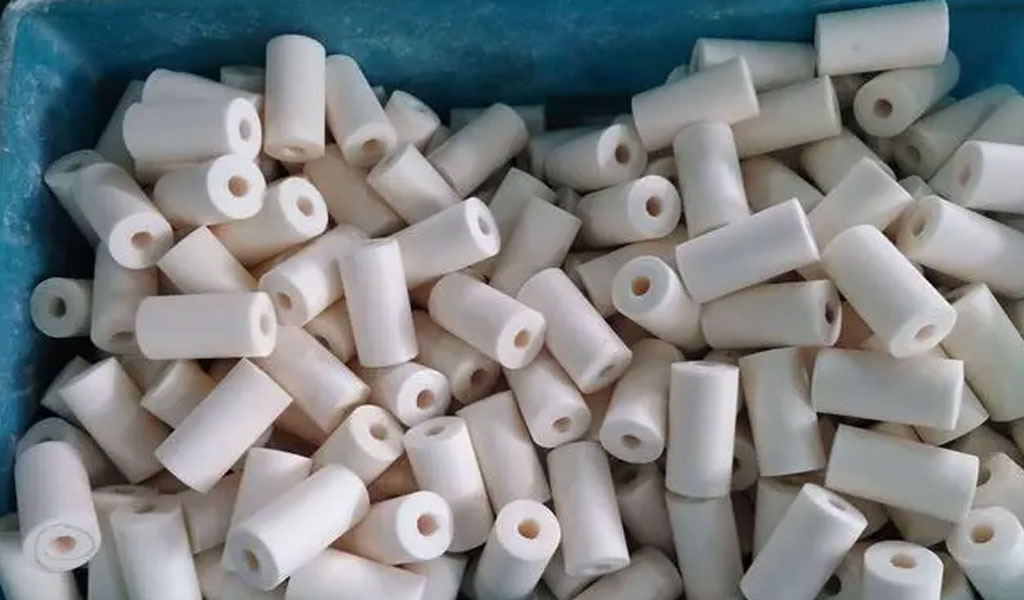
Zirconia ceramics toughened alumina ZAT ceramics can be made into various ceramic parts after a series of ceramic machining, and can also be made into simple ceramic rods, ceramic plates, etc. In the process of making finished products, the molding method is also very important Step one, the following Pintejin Ceramics Factory will introduce to you the molding method of ZAT ceramics.
ZTA ceramic powder molding method:
Powder molding refers to transforming the powder into a green body with a certain shape, size and strength before sintering. Forming will affect the density of ZTA ceramic green body and the uniformity of its internal microstructure, which has a great impact on the densification of the ceramic during the sintering process and the properties of the ceramic after sintering, including hardness.
Powder molding can be divided into two categories, dry molding and wet molding.
Dry forming also includes traditional dry pressing, isostatic pressing, etc. Traditional dry pressing can make the powder into a denser green compact, and can also crush the soft agglomeration between the powders, while isostatic pressing (commonly used) It is cold isostatic pressing), which uses liquid as a pressure transmission medium, so that the green body can be pressed more uniformly. It is re-molded to obtain a green body with high density, small pores and good uniformity.
Generally speaking, dry forming is widely used for simple ceramic parts, and can be suitable for large-scale industrial production due to its simple operation. However, in the preparation of ceramics by dry pressing, it is difficult to completely eliminate the agglomeration behavior of powders, which will inevitably affect the performance of the final ceramic products to a certain extent. Some researchers believe that how to prevent agglomeration and solve the problem of agglomeration is necessary to prepare ceramics with excellent performance. faced problems.
Schematic diagram of dry pressing and cold isostatic pressing In this way, people use wet molding. This method needs to first divide ZrO2/Al2O3 nanocomposite powder into a liquid to prepare a suspension. Wet molding is the problem of agglomeration of the powder. It is transformed into the problem of powder dispersibility, which effectively controls the occurrence of agglomerates in Supi. However, wet forming also has some problems. For example, the process is more complicated than dry forming, and the debinding process before body-by-body drying and sintering is a major problem that must be solved by wet forming. Although wet molding solves the problem of powder agglomeration to a certain extent, it causes the problems of debinding and difficulty in large-scale industrial production.
Pintejin machining ceramic service include : Alumina Ceramic Parts, Zirconia Ceramic, Silicon Carbide Ceramic, CNC Machined Aluminum Nitride Ceramic, Machinable Ceramic Parts, Glass Ceramic,Macor Ceramic,Powder Metallurgy Dies,Ceramic Injection Molding,Ceramic Dry Pressing,Ceramic Extrusion Dies




